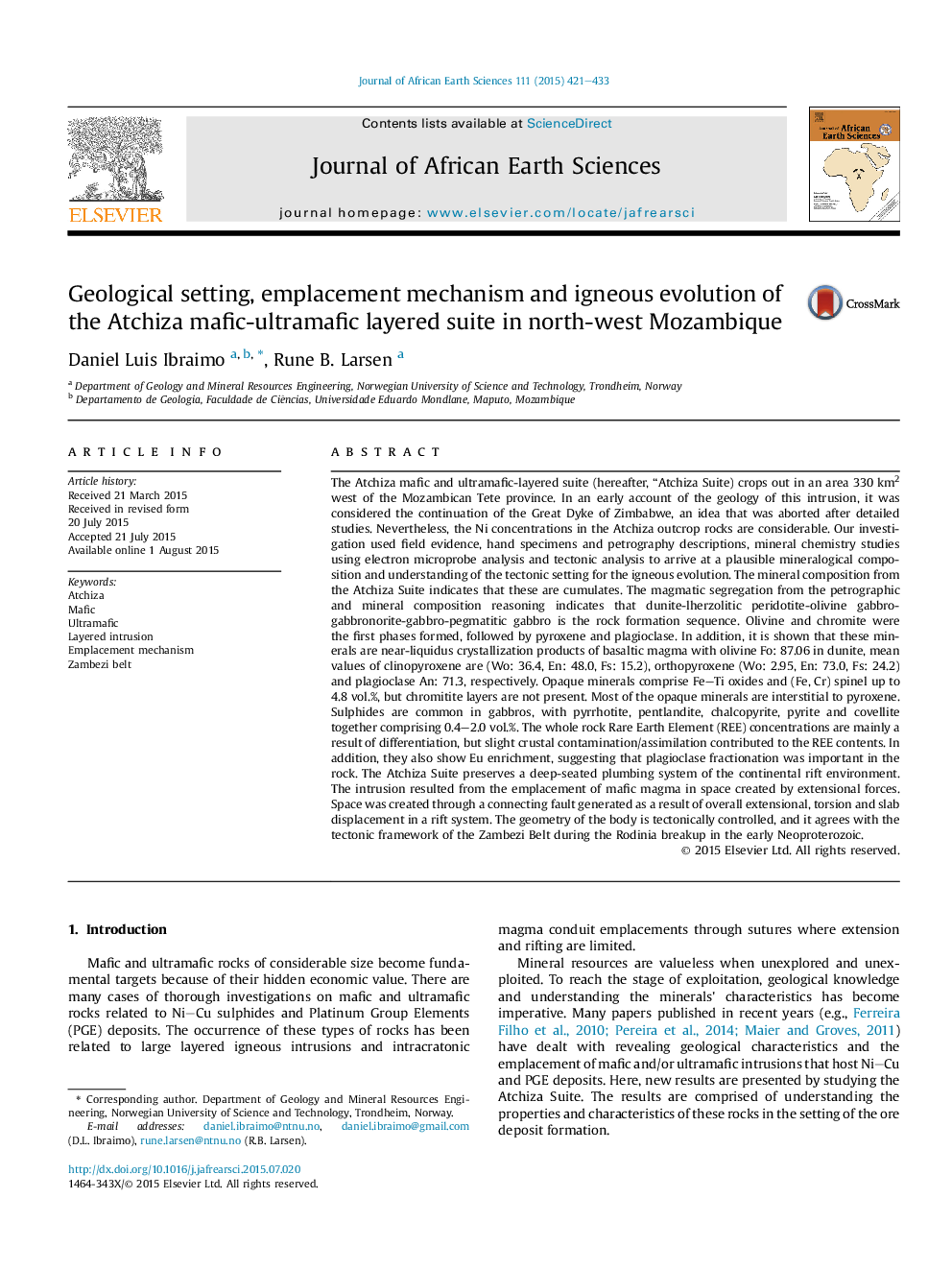| کد مقاله | کد نشریه | سال انتشار | مقاله انگلیسی | نسخه تمام متن |
|---|---|---|---|---|
| 4728514 | 1640196 | 2015 | 13 صفحه PDF | دانلود رایگان |
• Suite of dunite-peridotite-olivine gabbro-gabbronorite-gabbro-pegmatitic gabbro.
• Chromite is interstitial in peridotite but do not form chromitite layers.
• Mineral composition indicates near-liquid crystallization from mafic magma.
• Suite resulted from emplacement in a space created by an extension forces.
The Atchiza mafic and ultramafic-layered suite (hereafter, “Atchiza Suite) crops out in an area 330 km2 west of the Mozambican Tete province. In an early account of the geology of this intrusion, it was considered the continuation of the Great Dyke of Zimbabwe, an idea that was aborted after detailed studies. Nevertheless, the Ni concentrations in the Atchiza outcrop rocks are considerable. Our investigation used field evidence, hand specimens and petrography descriptions, mineral chemistry studies using electron microprobe analysis and tectonic analysis to arrive at a plausible mineralogical composition and understanding of the tectonic setting for the igneous evolution. The mineral composition from the Atchiza Suite indicates that these are cumulates. The magmatic segregation from the petrographic and mineral composition reasoning indicates that dunite-lherzolitic peridotite-olivine gabbro-gabbronorite-gabbro-pegmatitic gabbro is the rock formation sequence. Olivine and chromite were the first phases formed, followed by pyroxene and plagioclase. In addition, it is shown that these minerals are near-liquidus crystallization products of basaltic magma with olivine Fo: 87.06 in dunite, mean values of clinopyroxene are (Wo: 36.4, En: 48.0, Fs: 15.2), orthopyroxene (Wo: 2.95, En: 73.0, Fs: 24.2) and plagioclase An: 71.3, respectively. Opaque minerals comprise Fe–Ti oxides and (Fe, Cr) spinel up to 4.8 vol.%, but chromitite layers are not present. Most of the opaque minerals are interstitial to pyroxene. Sulphides are common in gabbros, with pyrrhotite, pentlandite, chalcopyrite, pyrite and covellite together comprising 0.4–2.0 vol.%. The whole rock Rare Earth Element (REE) concentrations are mainly a result of differentiation, but slight crustal contamination/assimilation contributed to the REE contents. In addition, they also show Eu enrichment, suggesting that plagioclase fractionation was important in the rock. The Atchiza Suite preserves a deep-seated plumbing system of the continental rift environment. The intrusion resulted from the emplacement of mafic magma in space created by extensional forces. Space was created through a connecting fault generated as a result of overall extensional, torsion and slab displacement in a rift system. The geometry of the body is tectonically controlled, and it agrees with the tectonic framework of the Zambezi Belt during the Rodinia breakup in the early Neoproterozoic.
Journal: Journal of African Earth Sciences - Volume 111, November 2015, Pages 421–433
